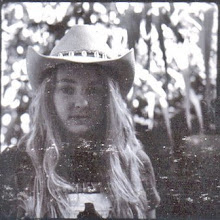I recently did some research for an educational program on owls. I learned a lot of really neat facts about these amazing raptors, and here are some of my favorites:
* Raptor come from the Latin word "rapere" meaning to grasp and carry away. Raptors (including owls, hawks, eagles, and other birds of prey) use their taloned feet to capture and kill animals. Owls eat frogs, lizards, snakes, fish, mice, rabbits, birds, squirrels, and insects, among other things.
* Many owls fly almost silently. This is thanks to the stiff fringe on the outer edges of their forward wing feathers that look like a comb. The rear wing feathers have a soft, hair-like fringe. These fringed edges soften the flow of air as it moves over the wings. The soft surface of the flight feathers absorbs the noise the feathers make as they slide over one another.
* Owls can’t move their eyeballs, so they must turn their heads to change the direction they are looking. They have 14 neck bones (twice as many as we have) which allow them to turn their heads 270 degrees in both directions.
* Many owls have asymmetrical ear placement, this gives them "3-d" hearing. Since their ears are not evenly placed, sounds may reach one ear before the other. They then tilt their heads until the sound reaches both ears at the same time. This tells them exactly where the sound is coming from, even without seeing the source.
* Some owl species have eyes larger than humans. Owl eyes may account for 15% the weight of their heads. Also, they have more rods (responsible for seeing in low light) and fewer cones (responsible for seeing color). This means they can see really well in the dark, but don’t see much color. They have visual sensitivity between 35 and 100 times better than out own.
Owls and other birds of prey are a vital part of the ecosystem. They keep rodent populations in check, and can be used as an indicator species for the health of their habitat. To protect these birds, it is crucial that they have ample habitat, and are not exposed to dangerous pesticides and pollutants. To protect land, donate or volunteer with your local land trust. If you see an injured raptor, contact a wildlife rehabilitation center.

Great horned owl (Bubo virginianus)

